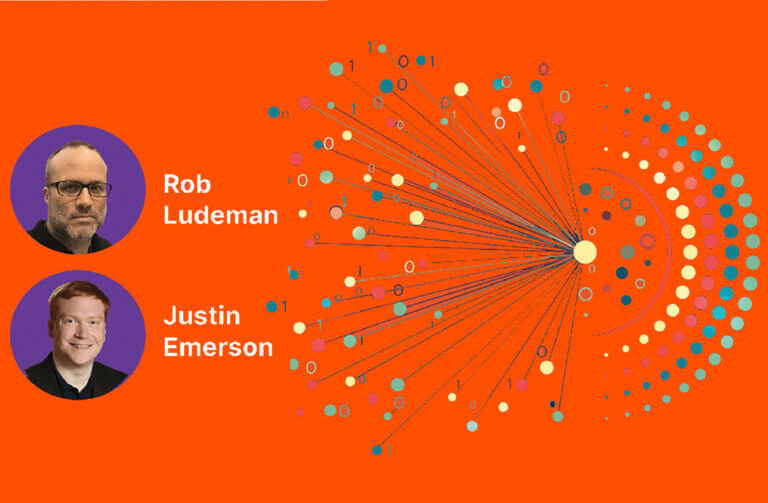Summary
From the beginning, Pure Storage set out to shake up the storage status quo. With no more spreadsheet gymnastics or ripping and replacing, our simple intuitive design is helping make IT people’s lives easier.
![]() Pure Storage has always been ambitious: We never sought to form just another data storage company. We wanted to build something revolutionary—that would change the tech world for good and ultimately help make everyone’s lives easier. Shouldn’t that be the underlying mission of all companies? Shouldn’t all companies offer legacy storage solutions that are truly evergreen?
Pure Storage has always been ambitious: We never sought to form just another data storage company. We wanted to build something revolutionary—that would change the tech world for good and ultimately help make everyone’s lives easier. Shouldn’t that be the underlying mission of all companies? Shouldn’t all companies offer legacy storage solutions that are truly evergreen?
Doing this meant challenging the status quo and questioning everything that data storage practitioners were doing at that time.
As a Principal Product Manager at Pure Storage, Justin Emerson has spent quite a bit of time in the trenches, helping storage admins and other IT roles deal with the shortcomings of traditional legacy storage arrays. As it turns out, there are daily tasks and functions storage admins have always conducted, without really understanding how and why they were necessary. But at Pure Storage, we innovated to find ways to eliminate the mundane and free up time for adding value.
“Never have we asked a customer to define a RAID level or set a stripe width or set a number of parity shards or set a number of replica copies, and all of those things are decisions that almost every other storage vendor puts on the user,” Justin said. “Our whole philosophy going all the way back to the founding is that we should build a system that’s simple from the get-go and that we should take on the burden of complexity for the customer.”
In this spirit, Justin and I went through the list of things that IT people no longer need to do thanks to Pure Storage.
1. Fretting about Drive Rebuild Times
“One of the biggest areas of when people lose data, it’s usually not from an actual data loss, it’s usually human error,” Justin said. “And one of those sources of human error is misconfiguring underlying resiliency structures—or you configure it one way and it was the correct decision at the time, and then two years later it turns out that you should do something different, but you don’t know that. Why doesn’t the system just fix that automatically? That’s how we approach the problem.”
As an example, one task Pure Storage relieves data administrators of is having to think about rebuild times on a 75-terabyte DirectFlash® Module.
“You don’t have to do that with Pure,” Justin said. “That’s not your problem. We give you that time back so you can take that whole mental load off of yourself because the system is smart enough to do that automatically.”
All Pure Storage systems start rebuilding data long before you replace the drive. All of the data on a device that’s failed will get rebuilt into available space on all of the other drives in the system.
“Moreover, we are always targeting a particular availability and durability target,” Justin said.
And those targets are a design availability of “six nines” and a mean time to data loss of millions of years.
2. Spreadsheet Gymnastics
Something else our customers don’t have to worry about? Spreadsheet management and proliferation.
Having to manage spreadsheets that are managing data and data capacity planning is not a good thing. We’d much rather have you focus on doing cool things.
“It leads to huge unpredictability with things like sizing,” Justin said. “Let’s say you have a brand-new system and it’s like, ‘Well, how much space can I fit in this brand-new system?’ Well, if you can configure it a dozen different ways, you don’t actually have an answer.”
Pure Storage will always quote you usable capacity, so you will always know how much unique data you can write to the box. It’s automatic. You never have to do the math yourself. And unique intelligent Pure1® features like Workload Planner eliminate the guesswork associated with running out of space, helping you understand future usage based on past trends and patterns.
3. Power Buttons
At Pure Storage, we see power buttons as just another thing that can go wrong.
“Why would you want your storage to be off?” Justin asked.
Shutdown procedures have a way of breaking things and the one shutdown procedure you have to design for is losing power.
“Again, it’s just sort of handing sharp objects to somebody and saying, ‘Don’t cut yourself,’” Justin said. “The smarter thing to do is to say, ‘There is one scenario that we’re designing for and there’s one scenario to make possible, which is, the power’s gone.’ And as long as we perform correctly in that scenario, then there’s no reason to have a power button.”
4. Workload Placement
What’s Pure’s response to people trying to decide which workload goes where? More spreadsheets?
No. We say just use highly efficient flash for everything.
“Now that everything can be on flash, it makes a lot of decisions much easier,” Justin said.
But there’s still a question about how to balance things, and Pure Fusion™ can help customers automate that whole workload placement.
“I’ve worked with customers that have dozens of systems across multiple data centers and they’re provisioning new storage all the time, and the only way they can manage that is to do that entirely programmatically.”
Check out more episodes of The Pure Report
5. Fine-tuning (i.e., ‘Nerd Knobs’)
Tuning, otherwise known as nerd knobs, is not required with Pure Storage.
“Again, a defining philosophy should be, ‘You shouldn’t have to make any decisions that are irreversible,’” Justin said. “You shouldn’t have to make any fine-tune adjustments—the system should do that on its own.”
Pure Storage customers never need to spend an inordinate amount of time optimizing the performance of their systems. Whether it’s FlashBlade®, FlashArray™, or Portworx®, our systems just do that on their own.
Not to mention, Pure Storage solutions work well right out of the box. You never have to worry about how to squeeze more performance out of your systems and in doing so create certain setting changes that then come back to bite you later and lead to situations like configuration drift.
Maximize Your Return—Wherever You Are on Your Modernization Journey (Special Report)
6. Ripping and Replacing
Hard drives fail. Systems need to be migrated. These things are major headaches. With Pure Storage® Evergreen®, you break this cycle of replacing, migrating, and updating. Because of our legacy storage solutions, you don’t have to worry about it and you don’t have to worry about increasing maintenance costs.
“For a FlashArray customer that bought the original FlashArray 12 or 13 years ago, they are still running an evolution of the exact same operating system,” Justin said. “There are customers who have had a single system in production for more than 10 years. Not a single component of that system is the same from what was delivered 10 years ago. Still, the identity of that array, the personality, and more importantly, the data of that array has persisted across more than a decade at this point.”
In addition, Pure Storage has a single, always-evolving operating system—Purity. As part of our Evergreen philosophy, Purity is always evolving too.
Also, with Pure Storage, the features are always built-in. You never have to “go back to the well” to buy more.
Discover more about why Pure Storage is the future of data storage.






